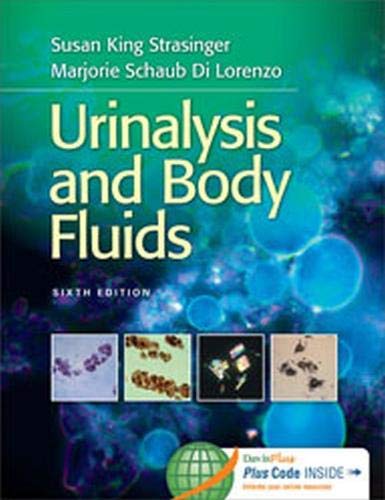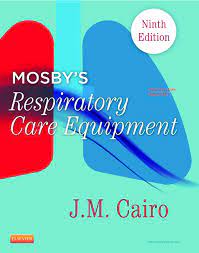Description
Urinalysis and Body Fluids 6th Edition By Susan King Strasinger -Test Bank
Chapter 1: Safety and Quality Assessment
Multiple Choice
1. Laboratory equipment and other inanimate objects serve as what in the chain of infection?
A. Host
B. Reservoir
C. Point of entry
D. Point of exit
ANS: B
DIF: Level 1
OBJ: 1
TOP: Biologic hazards
2. The chain of infection includes all of the following except a:
A. Source
B. Host
C. Disinfectant
D. Transmission method
ANS: C
DIF: Level 2
OBJ: 1
TOP: Biologic hazards
3. You arrive to work in the clinical laboratory with a small cut on your hand. Your supervisor pulls you from specimen collection (phlebotomy) duties for the day, citing chain of infection protocols. Why is your supervisor concerned about the cut on your hand?
A. Because you will not have the mobility in your hand to properly collect blood
B. Because you are going to have to wear a bandage all day long
C. Because you have a point of entry that could expose you to infectious agents
D. Because you are going to be an active transmitter of infection onto general surfaces
ANS: C
DIF: Level 3
OBJ: 1
TOP: Biologic hazards
4. Centrifuging an uncapped tube of urine is most likely to produce a/an:
A. Electrical shock
B. Broken tube
C. Unbalancing
D. Aerosol
ANS: D
DIF: Level 2
OBJ: 2
TOP: Biologic hazards
5. Which of the following guidelines tells laboratory personnel to consider all patients as possible carriers of blood-borne pathogens?
A. Urinalysis precautions
B. Blood-borne pathogen precautions
C. Standard precautions
D. Body fluid precautions
ANS: C
DIF: Level 1
OBJ: 2
TOP: Biologic hazards
6. The Centers for Disease Control (CDC) recommends that universal precautions be followed when encountering:
A. Specimens containing visible blood
B. Patients who are infected with blood-borne pathogens
C. All body fluid specimens
D. Specimens that may produce aerosols
ANS: A
DIF: Level 1
OBJ: 2
TOP: Biologic hazards
7. Which of the following CDC guidelines considers all moist body substances to be potentially infectious and stresses hand washing?
A. Universal precautions
B. Body fluid precautions
C. Standard precautions
D. Health-care personnel standards
ANS: C
DIF: Level 1
OBJ: 3
TOP: Biologic hazards
8. The Occupational Exposure to Blood-Borne Pathogens Standard is:
A. A guideline developed by the FDA
B. An additional precaution associated with urinalysis
C. A guideline recommended by the CDC
D. A law enforced by Occupational Safety and Health Administration (OSHA)
ANS: D
DIF: Level 1
OBJ: 3
TOP: Biologic hazards
9. A laboratory worker who observes a red hand rash after removing gloves should:
A. Avoid wearing gloves for 2 days
B. Wash the hands with antimicrobial soap
C. Apply cortisone cream to the hands
D. Avoid wearing latex gloves in the future
ANS: D
DIF: Level 2
OBJ: 4
TOP: Biologic hazards
10. Plexiglas shields are used in the laboratory when urine tube specimens are being:
A. Sorted according to lab
B. Uncapped for analysis
C. Centrifuged for analysis
D. Observed for color characteristics
ANS: B
DIF: Level 2
OBJ: 4
TOP: Biologic hazards
11. A urine specimen received in the laboratory is leaking in a transport bag. What is the next course of action?
A. It should be relabeled
B. It should be rejected
C. It should be processed with no special handling
D. It should be poured into a clean container
ANS: B
DIF: Level 1
OBJ: 6
TOP: Biologic hazards
12. Lab coats worn in the urinalysis lab should:
A. Be worn loosely over uniforms
B. Have short sleeves
C. Be completely buttoned
D. Be worn at all times in and outside of the laboratory
ANS: C
DIF: Level 2
OBJ: 4
TOP: Biologic hazards
13. Proper hand washing includes all of the following procedures except:
A. Rubbing to create a lather
B. Using warm water
C. Rinsing hands in a downward position
D. Using a paper towel to turn on the water faucet
ANS: D
DIF: Level 2
OBJ: 5
TOP: Biologic hazards
14. The acceptable method for disposing of urine specimens is:
A. Autoclaving in the entire collection
B. Pouring down the sink followed by copious amounts of water
C. Placing the specimen in a biohazard bag
D. Diluting with sodium hypochlorite
ANS: B
DIF: Level 1
OBJ: 6
TOP: Biologic hazards
15. Disinfection of the sink in the urinalysis laboratory should be performed:
A. On a daily basis
B. When a positive bilirubin is detected
C. Following an accidental spill
D. By using dilute hydrochloric acid
ANS: A
DIF: Level 2
OBJ: 6
TOP: Biologic hazards
16. Safety precautions observed in the urinalysis laboratory include all of the following except:
A. Wearing goggles or a face shield
B. Checking tube balance in the centrifuge
C. Centrifuging only uncapped tubes
D. Wearing a fluid-resistant lab coat
ANS: C
DIF: Level 2
OBJ: 6
TOP: Biologic hazards
17. The source, method of transmission, and host are all deemed:
A. Steps in the urinalysis
B. Components of the chain of infection
C. Problems encountered in urinalysis
D. Considerations in urine specimen transport
ANS: B
DIF: Level 1
OBJ: 1
TOP: Biologic hazards
18. Which of the following is a practice that all laboratory workers must avoid?
A. Changing gloves that are soiled
B. Centrifuging conical tubes
C. Moving puncture-resistant containers
D. Manually recapping needles
ANS: D
DIF: Level 1
OBJ: 6
TOP: Sharp hazards
19. Before using a water hose on a burning chemical cabinet, a firefighter would visually check that what is posted on the outside of the cabinet?
A. National Fire Protection Association (NFPA) symbol
B. Material Safety Data Sheet (MSDS)
C. Chemical Hygiene Plan
D. Occupational Safety and Health Administration manual
ANS: A
DIF: Level 1
OBJ: 8
TOP: Chemical hazards
20. Immediate information concerning the health hazards, flammability, and reactivity of a chemical can be obtained from the:
A. MSDS
B. NFPA symbol
C. CDC
D. OSHA
ANS: B
DIF: Level 2
OBJ: 8
TOP: Chemical hazards





Be the first to review “Urinalysis and Body Fluids 6th Edition By Susan King Strasinger -Test Bank”